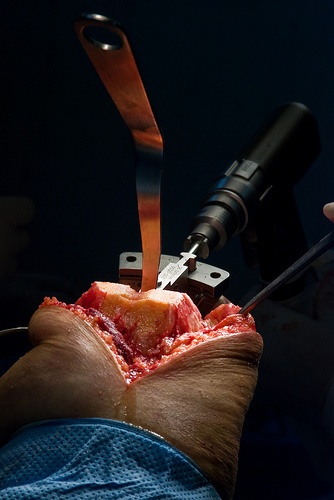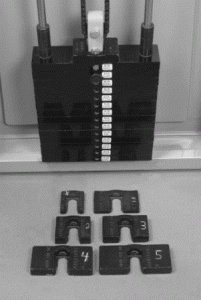 (This is what I am desperately trying to avoid!)
(This is what I am desperately trying to avoid!)
As many of you know, my knees are shot. Years of Karate, jogging, and growing up with bowed legs have left me with crippling medial compartment knee arthritis. I'm also certain that all the grains I've eaten (and drank) contributed to their early demise as well.
I want to share some ideas with you on how to exercise and strengthen the muscles that surround compromised joints. I'll explain some things I've done with myself and my clients that will hopefully give you some practical solutions to make and keep you as strong as possible if you suffer from similar joint maladies.
Do What You Can Do
This may seem obvious, but the first thing you want to do is discover the exercises you can do throughout a full, pain-free range of motion. Do these exercises regularly.
For example, for some people who have tennis elbow (which is inflammation of the tendons that attach the biceps and other arm muscles to the forearm bones), it can be very painful when performing biceps curls but not triceps extensions. So, make sure to keep full-range, triceps extensions in your routine. Below is a video of me doing a set of Slow Burn, full-range, triceps extensions:
[youtube=http://www.youtube.com/watch?v=5euN3plxvLM&w=440&h=390]
Limiting Range of Motion
A lot of people irritate and injure their tendons and some of the smaller "stabilizing" muscles when they start their exercises in a position where the joint or joints are completely extended - especially if they start the exercise in an explosive fashion.
There is a better way!
As an example, if you are doing a biceps curl, start from a slightly bent elbow position as seen below:

Granted, my elbows are a bit more bent than need be in this picture but you get the point.
Here is a video of me doing a set of biceps curls. Note the slight bend in my elbow at the start and note the very slow and deliberate start of each rep. No jerking!
[youtube=http://www.youtube.com/watch?v=LziWtiskfMY&w=440&h=390]
This will take the strain off of the tendons when in a fully stretched position and still develop full-range strength and muscle mass.
Modify all your exercises to limit the range of motion so that the start is a few degrees shy of complete extension. My friend Bill DeSimone wrote a very good book on understanding proper biomechanics called Moment Arm Exercise![]() . It's a must for your training library. It is not overly heady.
. It's a must for your training library. It is not overly heady.
To decrease the starting point, pin-off the weight stack as seen below by placing the stack pin where you need to to limit the range:

And when you increase your weights, use very small add-on plates so that the weight increases are barely felt. Increasing your weights by a mere half pound each session can add up to significant increase in weight over time. If you train twice weekly, and add a half pound to an exercise each session, that's a whopping fifty two pound increase in weight in one year. Not too shabby!
Below is a picture of old style Nautilus "saddle plates" that range from one half to five pounds:

Weight or Reps?
I've also found that using heavier weights for less total reps can, for some people, be superior to lighter weight for more reps. Sometimes less joint articulation is better for certain arthritic conditions. You'll need to use trial and error to see what works best for you.
Don't automatically assume, as many well-meaning physical therapists often do, that arthritis means you must use light weights for high reps. Not always. Don't be afraid to use heavy-ish weights even though you have arthritis. If your form is good and your rep speed controlled, you won't hurt yourself.
And sometimes you'll have to switch it up. Go with the flow and never ignore discomfort. Keep your mind on your muscles (and joints!).
Train hard, but train smart!











